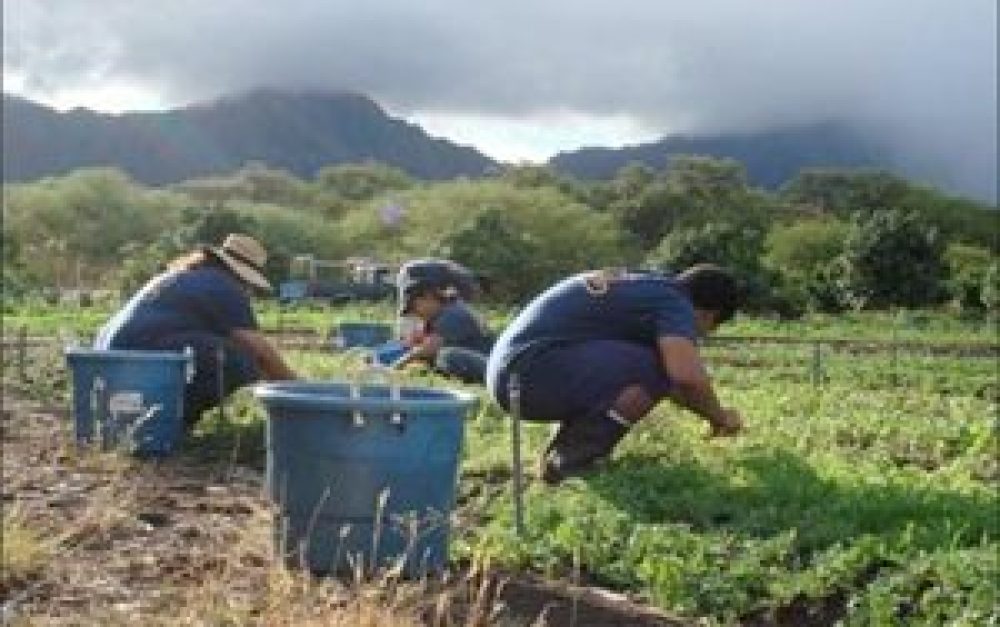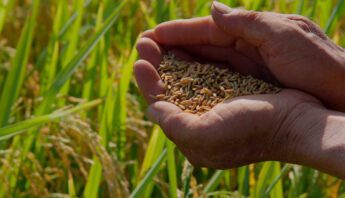The challenges faced by biodiversity-based ecological agriculture are not primarily technical but political. Evidence from three countries shows farming without fossil fuels works. But such methods will only be adopted widely once we prevail over the political power of agribusiness.
Food production systems that do not use or make minimal use of fossil fuels exist and are successfully feeding communities. Across the world, smallholder farmers, gardeners and other small-scale food producers have decided to minimize the use of unsustainable and harmful inputs that depend on fossil fuels, such as pesticides and fertilizers, as well as heavy machinery — and have in the process reduced their carbon footprint.
Biodiversity-based ecological agriculture
Biodiversity-based ecological agriculture (BEA) conserves biodiversity and reinforces ecological principles that are suitable for local ecosystems. The starting point is maintaining soil fertility and, as Professor Norman Uphoff of Cornell University says, “Feed the soil and soil will feed the plant.” Soil fertility can be maintained by using alternative sources of soil nitrogen, reducing soil erosion, practicing soil and water conservation, using animal and green manures, mulching and composting.
Such ecological practices include crop rotations that mitigate weeds, disease, insect and other pest problems, as well as farmer field school integrated pest management through understanding crop ecology and pest life cycles. Farmers can make informed decisions in the fields on the use of resistant varieties, the timing of planting, biological pest controls and increased mechanical and biological weed control.
The starting point of biodiversity-based agriculture is maintaining soil fertility.
Many of these practices make use of local ecological resources in a balanced way and then regenerate them. They build on local and indigenous knowledge developed by women and men small-scale food producers over generations, through experimentation and innovation when faced with problems.
These BEA models are in widespread use. For example, 20,000 rice farmers practice low external-input sustainable agriculture in Tamil Nadu; 56,000 rice farmers practice non-chemical System of Rice Intensification (SRI) in Cambodia and around 35,000 BEA rice farmers use the MASIPAG approach in the Philippines.
The SRI farmer I met in Cambodia grows rice, herbs and vegetables, keeps hens and ducks, and maintains a one-hectare rice plot with his family members. With the SRI method, the rice has more tillers per plant, larger panicles and heavier grains, and uses less water. Due to stronger root systems, the SRI plant is more resistant to climatic “extreme events,” such as storms or heat spells. Savings from not using commercial pesticides and fertilizers mean the farmer earns more net income. His daughter and son who had left to earn a living in the city have returned to work with him on the farm. The family’s total earnings now are substantially higher than when they were working in the city as labourers.
His daughter and son who had left to earn a living in the city have returned to work with him on the farm.In the Philippines, MASIPAG was first organized 27 years ago as a collaborative initiative between farmers and scientists to conserve traditional rice varieties and breed new ones. Today, the program maintains an in-situ reserve of a thousand local varieties and another thousand MASIPAG-bred rice selections, some 300 of which were bred by farmers. These include varieties that are higher yielding, more nutritious, and better able to resist pest attacks.
The approach prioritizes farmers’ empowerment and organizing so that rice research and development is needs-driven and builds a sense of ownership among farmers. The MASIPAG farmers continuously experiment with participatory methods as well as ecological farm management and local market development. The program has also expanded into corn breeding, livestock breeding and production, diversified integrated farm systems and local organic market development.
In Tamil Nadu, I met Ganapathy some time ago, a farmer who practices integrated farming with low external input sustainable agriculture. He grows rice, fruits and vegetables, keeps cows, hens and ducks, and rears fish in the rice field. His ducks and fish keep the rice pests in check and fertilize his fields with their waste. The ducks are let into the paddy field to eat the weeds, which has reduced the need for manual labour. The ducks also feed on insects and their egg masses. His small one-hectare farm is fully sustainable and he receives good income from it. His only major external input was a pump that draws underground water. With a small investment in a solar water pump or photovoltaic water pump system, even this conventional pump could become a thing of the past.
Ducks and fish keep pests in check and fertilize fields with their waste.
SIBAT, a civil society organization in the Philippines has lit up the lives of villages by perfecting a micro-hydro system that generates electricity without the use of fossil fuels. This community-managed system provides lights and energy for food and crop processing, and household livelihood needs.
As these diverse BEA examples show, it is possible to produce food and fiber without any fossil fuel: from farmers’ seed production and sharing, to ecological food production without the use of pesticides and fertilizers, to alternative non-fossil fuel energy for electricity and processing.
The biggest challenge that remains is the transportation of food products to cities, since most of our transportation still depends on fossil fuel. To reduce this dependency, communities around the world are opting for local food production and local markets.
Local foods & local markets
Growing food locally and consuming locally grown food makes sense since transport costs are minimized, and we can benefit from nutrients that are often lost when foods are processed and transported to urban supermarkets. One system that works is community supported agriculture (for example, the Teikei system in Japan) where consumers invest in organic or BEA farmers by subscription. The organic farmers are guaranteed a fair price and consumers are assured that the produce they receive is clean and free of fossil fuel additives.
As consumers become more concerned about their health and are armed with information, they are opting for more BEA foods. However, access to safe food for urban consumers remains a challenge even with emerging urban gardening projects around the world. This is where we will still need political will and government financial support to fast-track the development of BEA food production and cleaner, renewable energy technologies.
The main challenges to mainstreaming BEA food systems are not technical but political.The main challenge to mainstream BEA food systems is not technical but political. We need to prevail over the political and economic power of the agribusiness sector that drives the expansion of the unsustainable corporate model of farming. Government subsidies that fuel these unsustainable production systems — both direct and hidden — have to stop.
Instead, we need to put in place policies and programs that stimulate the widespread adoption of BEA to meet the future challenges of food production and distribution. These polices should promote the conservation of biodiversity, including agro-biodiversity, and encourage local seed banks. Decentralized participatory research that builds on farmers’ and indigenous knowledge systems should be funded and institutionalized, and the MASIPAG approach of farmer-scientist partnerships should be emulated.
The sharing of information, knowledge and innovation has to be an ongoing process since BEA is knowledge intensive. Sharing through farmer-to-farmer learning exchanges and easily accessible information platforms are good initiatives.
Since BEA is knowledge intensive, farmer-to-farmer sharing must be ongoing.
Mainstreaming BEA will also require support for the full participation of organizations and movements of small food producers. Their rights, particularly those of women producers, to land and productive resources must be guaranteed so that they can make long-term investments in soil fertility, can develop innovations in agro-ecological practices and can access local markets or develop systems of community supported agriculture. In addition, governments should reorient public agriculture spending toward strengthening and expanding agro-ecological practices through extension services and research.
I believe we can break the food system’s dependence on fossil fuels, but the way forward will require a major paradigm shift that needs strong political and societal commitment starting now.
Sarojeni V. Rengam is Executive Director of the Pesticide Network Asia and the Pacific.
This article was originally posted on the Oxfam blog.







